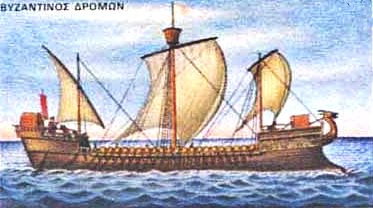
Battle of Sena Gallica(Sinigaglia, Senigallia) |
year: 551Autumn 551 |
| A Byzantine victory at sea against the Ostrogoths | ★ ★ ★ ★ ★ |
|
enemy: Ostrogoths
|
location: Near modern Senigallia, north of Ancona, Italy
|
accuracy:
●●●●●
|
|
battle type: Naval Battle |
war: Gothic War in Italy (535–554) |
modern country:
Italy |
| ▼ The Byzantines(emperor: Justinian I) | ▼ The Enemies | |
| Commander: | Ioannes & Valerian | Indulf & Gibal |
| Forces: | 50 warships | 47 warships |
| Losses: | no ship was lost | all ships lost |
| Background story: |
| In 550, the Gothic War was in its fifteenth year. The Ostrogoth king Totila in order to deny the Byzantines easy access to Italy and the ability to land fresh troops or reinforce their outposts, created a navy of 400 warships to contest the seas with the Empire. Receiving information that Justinian was preparing one last major effort to reclaim Italy, Totila decided to block Ancona to prevent the invasion. He besieged Ancona with 47 ships and he sent the rest of his fleet, 300 ships strong, to raid the coast of Epirus and the Ionian Islands. Ancona was likely to fall soon, and therefore the Roman commander of Ravenna Valerian, called upon John (Ioannes), an experienced general who was stationed at Salona (Dalmatia) awaiting the arrival of Narses and his army, to send a relief force. John immediately manned 38 ships with his veterans, and was soon joined by 12 more ships under Valerian himself. The joint fleet met the Goths near Sena Gallica, some 17 miles north of Ancona. |
The Battle: |
 Byzantine dromon Unlike in classical Antiquity, the warships of the 6th century did not feature rams; naval combat was instead dominated by missile exchanges and boarding actions. In this type of combat, experience and the ability to maintain a formation of ships was essential, and the Byzantine crews held the advantage over the inexperienced Goths. Soon, in the heat of battle, some Gothic ships drifted off the main body and were easily destroyed, while others sailed too close together and were unable to maneuver. In the end, the weary Gothic fleet disintegrated and their ships fled as fast as they could. They lost 36 ships, and Gibal was captured, while Indulf with the remainder fled towards Ancona. As soon as he came close to the Gothic army's camp, he beached his ships and set them on fire, in order not to be captured by the enemy. |
Aftermath: |
| This defeat disheartened the Goths who immediately abandoned the siege of Ancona. The battle can be regarded as the turning point in the Gothic war. It was also the last major sea battle fought in the Mediterranean for more than a century. |
|
|
